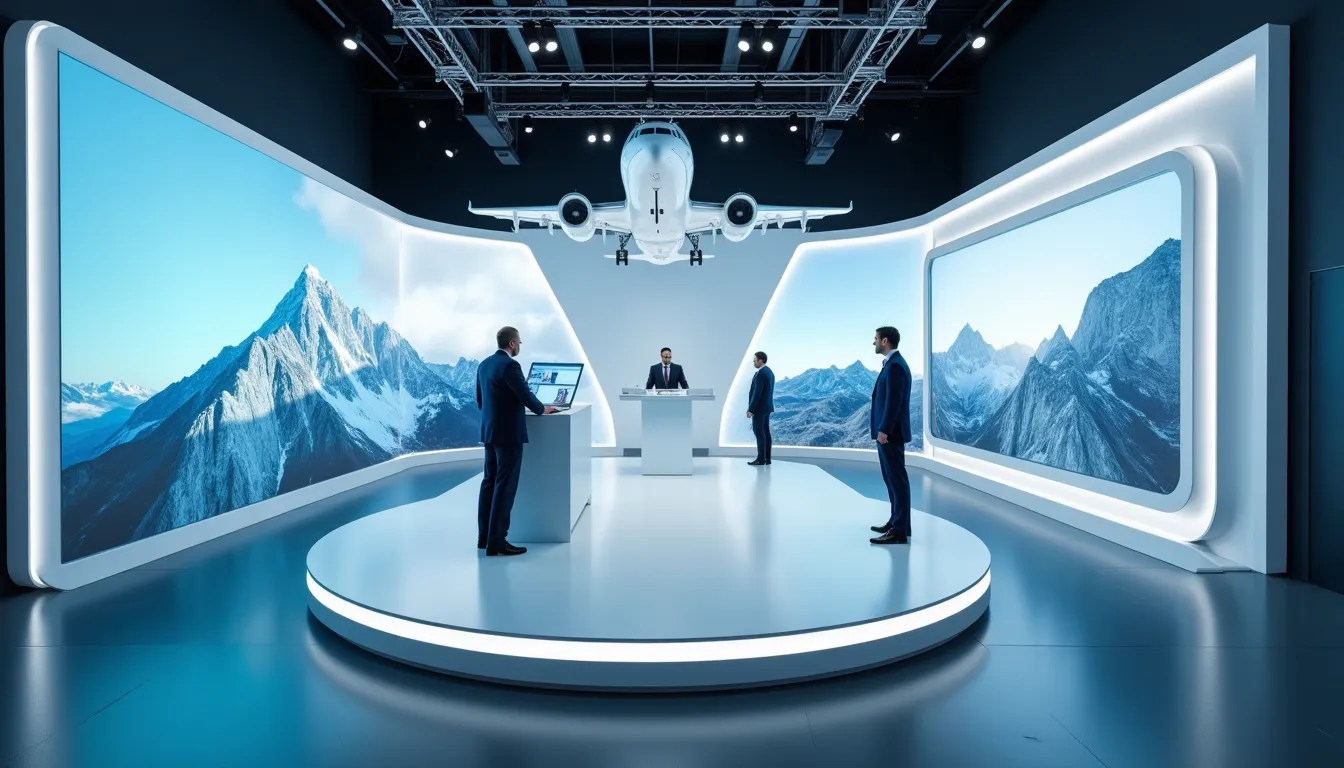The aerospace and defense sectors are undergoing transformative changes driven by technological advancements and a need for greater security. Recent developments highlight the emphasis on modernization efforts, innovative defense technologies, and the growing importance of domestic manufacturing capabilities. This article delves into the latest trends and insights shaping the future of defense.
NORAD Modernization and Space-Based Sensors
The North American Aerospace Defense Command (NORAD) is in the midst of a significant modernization initiative aimed at enhancing airspace security across North America. A central component of this effort is the deployment of space-based sensors, including Air Moving Target Indicator (AMTI) systems, designed to track airborne threats with unprecedented accuracy.
According to a recent report by the Center for Strategic and International Studies (CSIS), integrating these space-based AMTI systems is essential for establishing a robust defense architecture that can adapt to modern threats.
“Leveraging space capabilities will be crucial for maintaining an effective layered defense system that complements terrestrial sensors,” said an industry expert. The strategic advantage provided by these systems is expected to bolster NORAD’s ability to detect and respond to potential adversarial incursions in real-time, ensuring comprehensive airspace surveillance.
Challenges in Defense Technology Manufacturing
As the U.S. defense industry seeks to modernize its capabilities, one pressing challenge persists: the dependency on foreign components, particularly from China. This issue became evident when a U.S. drone manufacturer encountered supply chain disruptions after selling drones to Taiwan. Industry leaders have voiced concerns over the risks associated with such dependencies, emphasizing the urgent need for reindustrialization within the U.S.
Companies like Anduril and Palantir are advocating for a stronger domestic manufacturing base to reduce reliance on foreign suppliers. “Investment in local production facilities will not only enhance our defense capabilities but also create jobs within the U.S.,” stated a spokesperson from Anduril. This shift towards self-sufficiency is vital for maintaining the integrity and security of defense technology.
Growth of the Military Drone Market
The military drone market is witnessing exponential growth, with North America leading the charge. Recent projections indicate that the global military drone market is expected to reach $47.16 billion by 2032, with the U.S. market alone projected to surpass $10.71 billion by 2030. This surge is largely fueled by significant investments in research and development from major players like Boeing and Sikorsky, who are at the forefront of drone technology advancements.
The increasing demand for precision drones equipped with advanced capabilities, such as the integration of high-performance MEMS accelerometers, is driving innovations in this sector. These accelerometers offer superior stability and reliability, essential for the complex maneuvers required in military applications.
Advancements in Defense Technology
Boeing Defense, Space, & Security is ramping up its adoption of artificial intelligence (AI) across its defense programs in collaboration with Palantir. This partnership aims to leverage AI technologies to enhance decision-making processes, automate data analysis, and improve operational efficiency across various defense applications.
The integration of AI into defense systems is becoming increasingly crucial as military operations evolve. Companies like Teledyne FLIR Defense are also expanding their capabilities, opening new offices and focusing on cutting-edge defense technologies, including advanced sensor modules that integrate MEMS gyroscopes for enhanced motion sensing.
In addition, the development of systems like the ZQXXSGDSS and JDWDG070 is set to revolutionize laser tracking and precision measurement in military applications. These high-performance detectors and accelerometers are critical in ensuring accurate targeting and operational effectiveness on the battlefield.
Conclusion
As the aerospace and defense sectors continue to evolve, the integration of advanced technologies and a focus on domestic manufacturing will play pivotal roles in shaping future defense capabilities. With the modernization of NORAD, the expansion of the military drone market, and the adoption of AI in defense technologies, the industry is poised for significant growth and innovation. The future of defense lies in leveraging these advancements to ensure national security while fostering a resilient and self-sufficient manufacturing ecosystem.
References
-
Bloomberg Defense Tech Special | Bloomberg Tech 10/10/2025 (www.youtube.com) - 10/11/2025 / bloombergbusiness. Bloomberg Defense Tech Special | Bloomberg Tech 10/10/2025 … “CBS Evening News” Full Broadcast | October 11, 2025. CBS …
-
North American Aerospace Defense Command (NORAD … - CSIS (www.csis.org) - 10/10/2025 October 9, 2025 • 9:30 – 10:15 am EDT. Hosted by Korea Chair. Growing the Greater San Diego Semiconductor Ecosystem. October 9, 2025 • 4:00 – 9 …
-
Aerospace & Defense Technology: October 2025 - SAE International (www.sae.org) - 10/1/2025 Aerospace & Defense Technology: October 2025 · Nadcap at 35: Still Defining Excellence in Aerospace and Defense Manufacturing · High Performance …
-
In-sight from October 2025 - Defense and Munitions (www.defenseandmunitions.com) - 9/29/2025 HII announced former Chairman, CEO, and President of Hexcel Corp. Nick Stanage was elected to the company’s board of directors.
-
DefenseScoop | Breaking US Military Tech News, Modern Defense … (defensescoop.com) - 1/19/2023 DefenseScoop is the premier community-driven news source dedicated to the U.S. military’s acquisition, development and use of technology as a force for …



